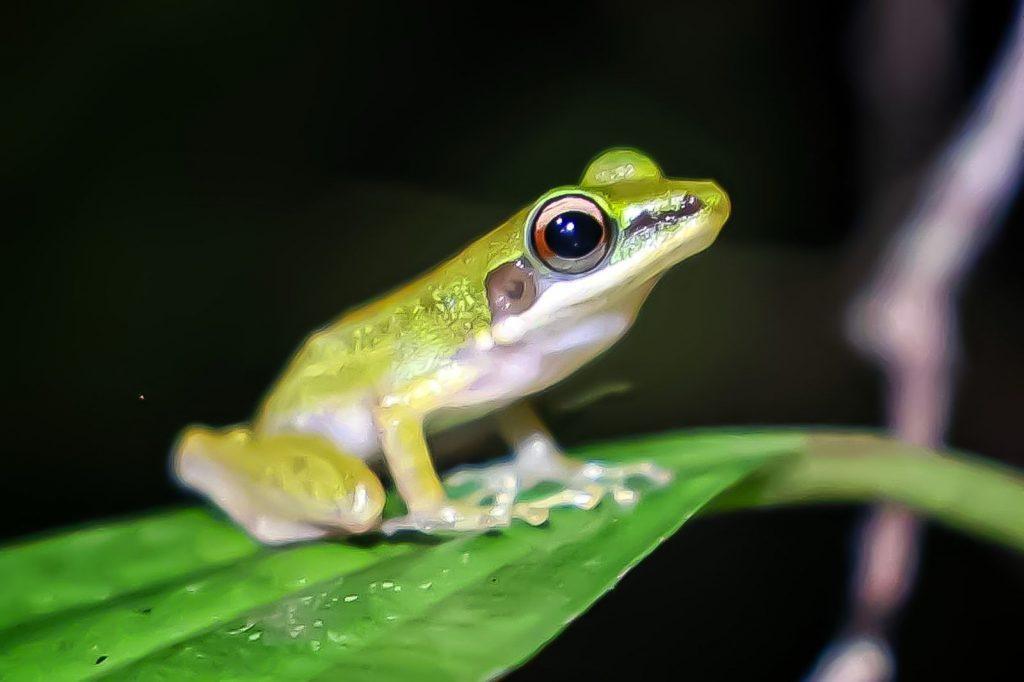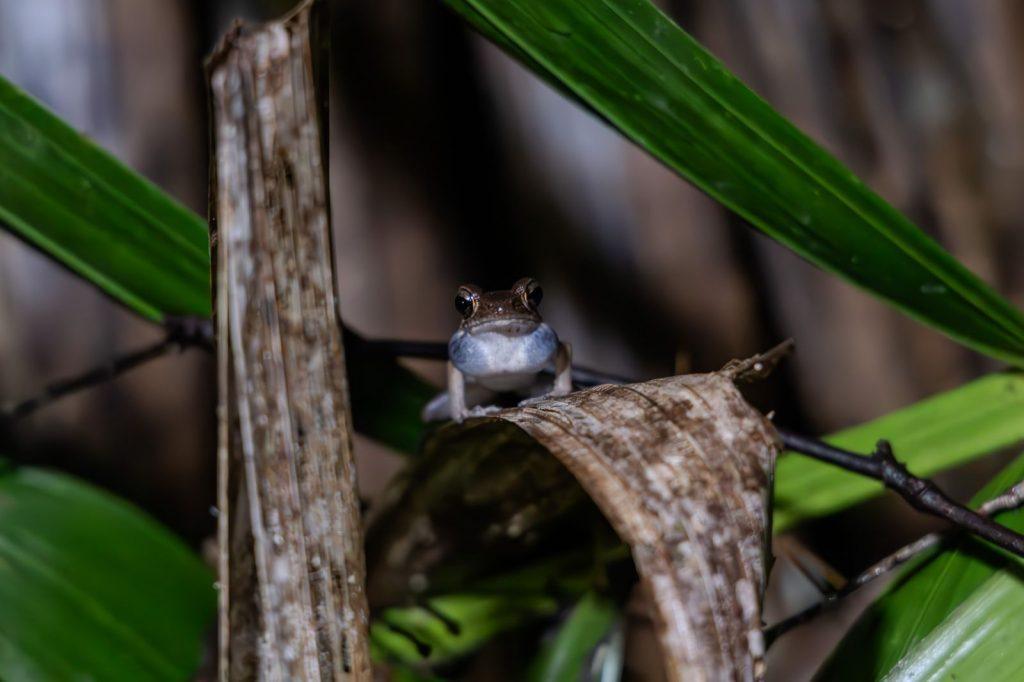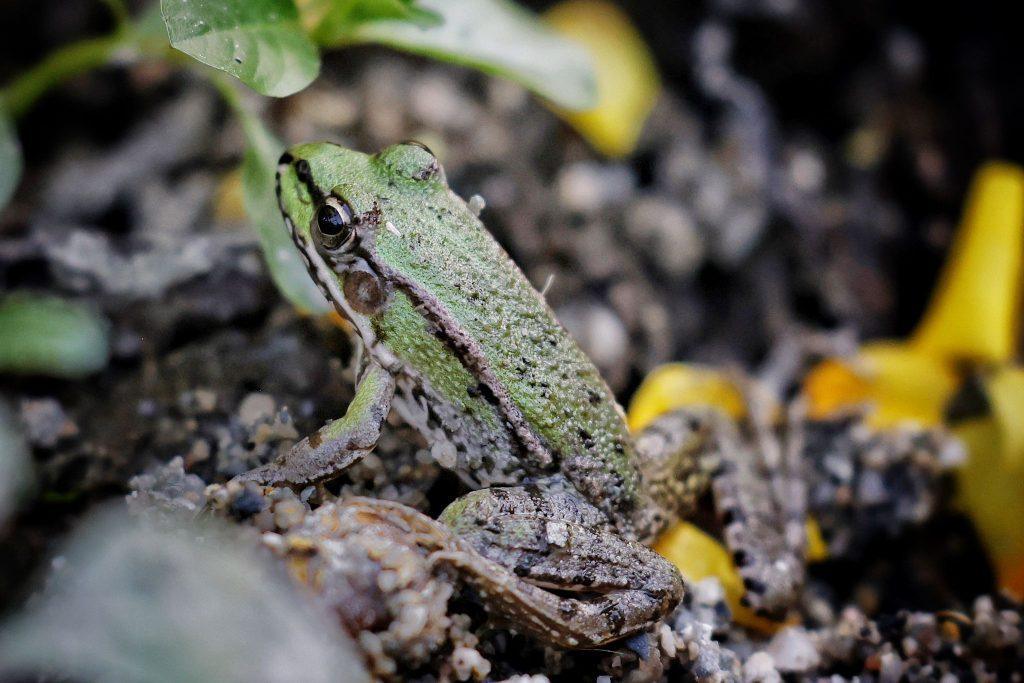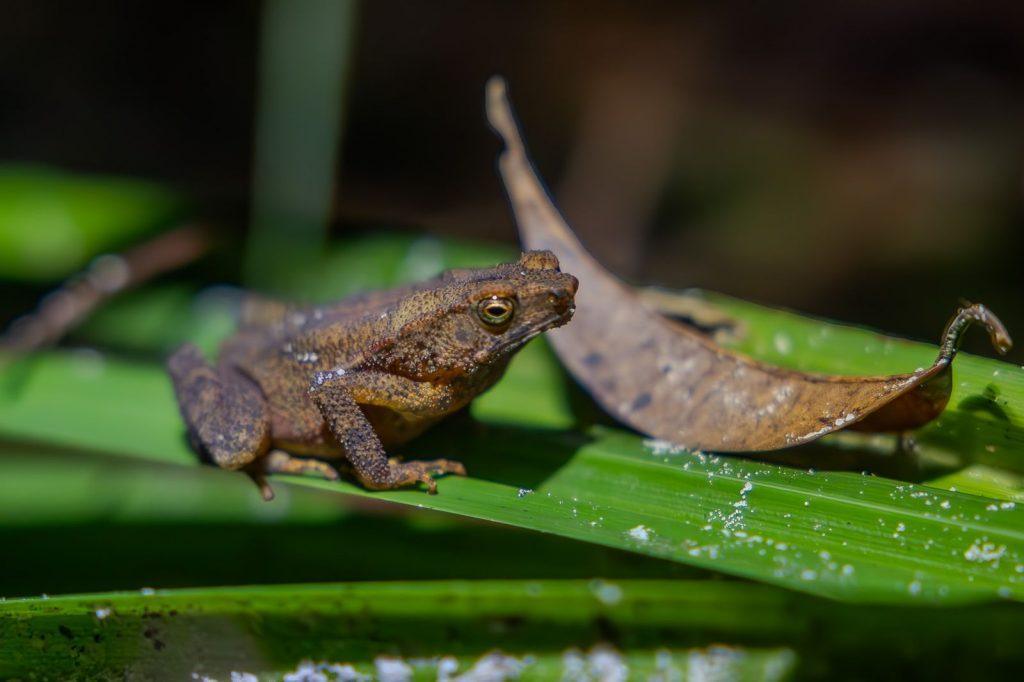They leap through our tales, our marshes, and sometimes our laboratories. Fragile yet essential, frogs tell the invisible story of ecosystems. Their complex biology fascinates herpetologists, their calls shape tropical nights, and their decline alarms scientists worldwide. Observing these amphibians means understanding the health of our environments, but also grasping the beauty of an ancient adaptation, between metamorphosis, croaking, and improbable survival.
Article and photographs by Damien Lafon.

Frogs and Herpetology: discreet witnesses of ecosystems
Frogs inhabit our forests, rice fields, rivers, and wetlands. Their thin, permeable skin absorbs water and pollutants. Each change in their population reflects the health of an environment. For herpetologists, they are irreplaceable bioindicators. When they disappear, it often signals a broader ecological imbalance. Their role goes beyond scientific observation. Frogs regulate insects, feed fish, birds, and snakes, and contribute to the stability of entire food chains. Transition: understanding their diversity reveals the complexity of life on Earth.
Remarkable diversity and adaptation
With more than 7,000 known species, frogs occupy almost every environment: from tropical rainforests to the arid plateaus of Australia. Tropical frogs display vivid colors, real toxic warning signals. Those from temperate regions wear browns and greens to blend into vegetation. Some survive freezing by producing natural sugars that protect their organs. Others burrow deep into the ground to withstand extreme droughts. Each adaptation illustrates the evolutionary flexibility of this group. Transition: beyond their appearance, they possess a unique acoustic language that fascinates both scientists and curious observers.
Croaking: the mysterious language of frogs
At nightfall, males inflate their vocal sacs and release powerful calls. Each species has a distinct acoustic signature, shaped by the structure of its vocal cords and the acoustics of its habitat. These croaks mark breeding seasons, attract females, and deter rivals. For scientists, recording these sounds is like analyzing a living acoustic map. Variations in frequency or intensity help track the condition of a population. Today, herpetologists use automatic recorders in tropical forests to capture these invisible concerts.
Did you know?
The Malagasy tree frog Boophis madagascariensis produces a call that sounds like an electronic signal. Locals sometimes call it the “alarm frog.”

Metamorphosis: a biological marvel
Frogs embody one of the most spectacular life cycles in the animal kingdom. From gelatinous eggs to swimming tadpoles, then to leaping adults, each stage shows the power of evolution. Thyroid hormones trigger this metamorphosis, a true physiological revolution. Some species compress this cycle: their young emerge directly from the egg as miniature frogs. This strategy reduces risks from aquatic predators. For researchers, metamorphosis remains a prime field for studying developmental biology, adaptation, and even the evolution of vertebrates.
Threatened frogs: a global decline
Over the past fifty years, one third of amphibians has declined rapidly. The chytrid fungus has wiped out entire species in Central America and Australia. Agricultural pollution, habitat fragmentation, and climate change worsen this silent catastrophe. This decline disrupts ecosystems: mosquitoes and insects multiply, while reptiles, fish, and birds lose a vital food source. The balance collapses. Transition: yet, in the face of this crisis, conservation and research projects bring a glimmer of hope.
Did you know?
Darwin’s frog (Rhinoderma darwinii) has an unusual strategy. The male carries tadpoles in his vocal sac until they complete their transformation.

Science and conservation: paths forward
Programs raise certain frogs in captivity before releasing them into restored habitats. Researchers also preserve genetic samples in biobanks to safeguard diversity. In several countries, reserves created around wetlands provide refuge for local populations. Science also explores the biomedical potential of frogs. Their skin secretes antibacterial peptides studied as alternatives to antibiotics. These discoveries show how their disappearance would represent a loss for research.
Watching a pond in spring, listening to a nocturnal concert, or following a tadpole’s transformation reminds us that these modest but essential creatures deserve our full attention.
Follow us on Instagram and Facebook to keep up to date and support our media at www.helloasso.com
This article may be of interest to you: The Marine Crocodile: Giant of Australian Estuaries
